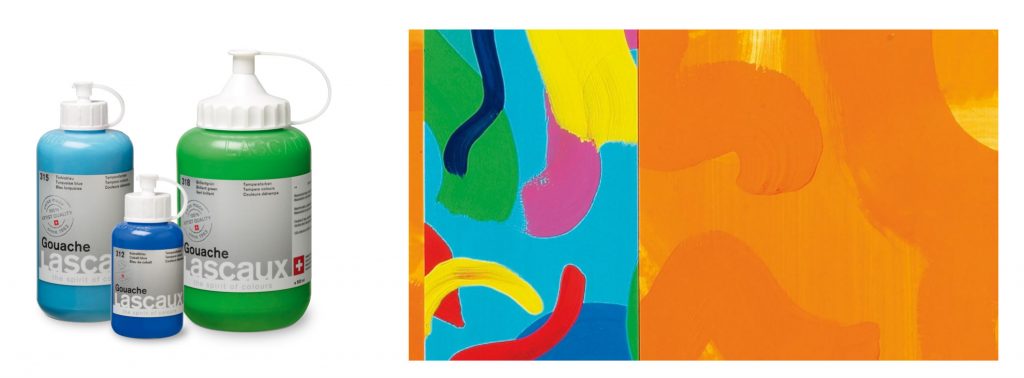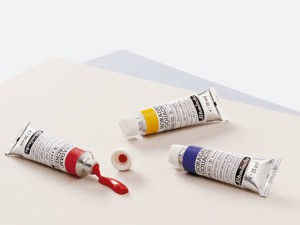When it comes to choosing what kind of paint might be best for your next project, you might feel overwhelmed by the available choices.
For example, if you want to work in layers or are interested in blending, you might go for oil paints. If you like abstract art and want to produce flat and even colour surfaces on board or stretched canvas, acrylic paints would be a good choice. If you like to paint landscapes and enjoy painting outdoors, a portable watercolour set and a sketch pad would present a convenient option.
But what about gouache paint? What do you use this paint for and what is the difference between watercolour painting and gouache painting?
Gouache paint is an opaque paint that, like watercolour, is water mixable. It dries matt and remains water soluble when dry. Historically gouache painting can be traced back to the painting techniques of the antiquity. Despite being one of the earliest painting techniques in the history of art, gouache painting continues to be used for art and design purposes up to this day. Gouache paint most commonly consists of pigments combined with a gum arabic binder. At Chapman and Bailey we stock Schmincke Horadam Gouache, as well as Lascaux acrylic-modified gouache paint.
It is important to understand that gouache is mainly intended to provide thin opaque application of colour. Watercolour in comparison is suitable for producing transparent layers of paint. In watercolour painting the white of the paper is left visible to create highlights. In other words, while watercolour painting work goes from light to dark, in gouache painting, any process can be used. Although “back painting” of lights is limited in watercolour painting, when working in gouache (and other opaque colours), light values and lights can be added later using colours. When you start working with gouache paint you will understand very quickly that gouache colours dry more brightly, meaning that it is necessary to work out the appropriate dosage of light and dark colours when mixing.
In order to minimise the effect of the colour-shift during the drying process, Swiss paint maker Lascaux has developed an acrylic modified gouache paint which only shows a very minimal difference in brightness once the paint dries. Furthermore, Thanks to the special acrylic modified binder, Lascaux Gouache applies with great ease and suppleness. A previous layer of colour can be painted over without being dissolved by the fresh paint layer.
When working with gouache paint for the first time it can be helpful to find out how other artists might have used to the medium. Notably, many modern painters such as audcasinos Lautrec, Meissonier, Picasso and Chagall have produced works in gouache paints. Once you start researching how others have worked with the paint, it will become clear that the nature of the medium allows it to be used in many different ways. From adding intensity and weight to watercolour sketches, to changing the texture of a sketch by adding washes of white gouache paint, to producing vibrant opaque colour surfaces, gouache paint is a very versatile medium.
It is also good to know that gouache paint is best applied to wet paper, as the colour will sink in and become integrated into the paper’s surface. When painting onto dry paper, the paint tends to stay slightly raised, resulting in a chalky look. To avoid tearing or rippling of the paper, make sure to choose a high-quality paper to work on, such as 300 – 600gsm Arches or Stonehenge 100% cotton watercolour paper, available at Chapman & Bailey. Furthermore, choosing tinted paper can add to the overall look of the painting and provides an alternative to working on white backgrounds.
Once you understand the characteristics specific to gouache paint, such as its opaque appearance, the fact that colours appear lighter once dry, and the paint’s various application techniques, you will find that gouache presents a wonderful alternative to painting with watercolour and acrylic paint.


